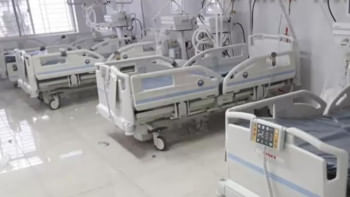Shantiniketan Poushmela

Merry Christmas (belated though!), and a very happy new year to all!
I finished my year (2018) with a polemical trip to Shantiniketan Pouhsmela—my first ever.
In spite of last minute dispiriting remarks by some of my colleagues about Shantiniketan Poushmela of the recent times, I was left with no other option but to go for the trip that I had set and scheduled months back. I was looking forward to it with all my eagerness for years as my friends and acquaintances often put me in awful unease for not visiting Shantiniketan during Poushmela—though I had been to Shantiniketan several times.
However, the discouragement was mainly on the grounds that the mela these days have lost all its Shantiniketani charm because it is impudently or perhaps inevitably overrun by corporate urban cultures flooded with synthetic products. As I had no previous experience of visiting the mela I was or even now am quite incompetent to do any comparative study. So, just with the hope of satisfying my craze for seeing Shantiniketan Poushmela(and also for shaking off the aforementioned disgrace)I went there on December 26, 2018—and it was an extravagant indulgence!
It was a planned concerted itinerary with my young but very knowledgeable Kolkata friend Anshuman Bhoumik (a freelance theatre critic writes mostly for The Telegraph of Calcutta) whose company I always adorably long for. In fact it was all his chalked-out plans (train ticket, food and lodging etc.—luckily he has a studio-room at Shantiniketan), and I only had to buy my air ticket to reach Kolkata.
The train journey was smooth and hassle free though the station and the train itself was not neat and tidy at all (last thing we can expect anywhere in this subcontinent)—but then, as we know, a huge number of travellers commute by rail in India round the clock, and it is a hell of a task (almost impossible for that matter) to keep a public place of that sort clean.But the train, to my utter surprise, reached Bolpur rail station, (Shantiniketan being a small town near Bolpur) exactly on time!
As we neared Bolpur, Anshuman phoned one of his favorite battery-operated (hybrid!) tumtum drivers named Nazrul Islam to take us from the station. We had to wait outside the station for ten-fifteen minutes for him to arrive, but the rest of the journey to Panthonibash, the township where Angshuman has his studio-room, was quite pleasant. Our ride was on an optimally wide ten kilometers of bitumen that wound through the villages and open paddy fields on both sides though some places were plagued(literally) by corporate raiders building new townships—business, business everywhere!
After our lunch in the lone restaurant run by Panthonibash township management we once more rode about eight kilometers by a tumtum to reach the mela—it was then 4 O'clock in the afternoon. We had to wade through a huge crowd once we alighted from the tumtum, and it took us about half an hour to reach the main entrance of the mela. People from all walks of society hugely crowded the mela premise that stretched over no less than 3/4 square (may be even more) kilometers of open plain.
The mela, I must confess, had a display of unpromising cocktail of indigenous and synthetic products—God knows what shape it will take in future! From handicrafts to hardware, from hand-woven fabrics to ready-made garments, from pizza, fried chicken, and French fries to hydrabadi biryani or pilao and pitha, from iron foundry produces to stainless steel kitchenware, from leather/foam jackets to locally produced handloom fabric Nehru coats, from ice cream to dairy sweetmeats, from western cosmetics and artificial jewelry to alta (lac-dye women use to paint their feet), wooden/buffalo horn chiruni (comb),and puthir mala (strings of glass-beads), and what not—it was practically a titanic assembly of old and new! There were also Shantinketani punjabi, chador (shawl), and bags of exclusive choices. So it is a real coexistence of indigenous cottage products and corporate industrial articles of trade. But my most liked event was baul songs—a forum where a feeling of peaceful religious fraternity perpetuates.
Did I like Shantiniketan Poushmela? I have no straight answer to that, for though I was really fascinated by the enormity of the mela premise, and number people gathered there (I met a number of Bangladesh is too), I was not free from apprehensions—what modern living is going to do to our tradition and culture! Had Rabindranath been alive, would he be happy to see it? I am not quite sure.
Unfortunately our journey back was not as smooth as it was expected—the train was three hours late and we reached Kolkata around midnight!
The writer is an educationist teaching English Language & Literature at Central Women's University. He is also a Bangla Academy awardee for translation.

 For all latest news, follow The Daily Star's Google News channel.
For all latest news, follow The Daily Star's Google News channel. 



Comments